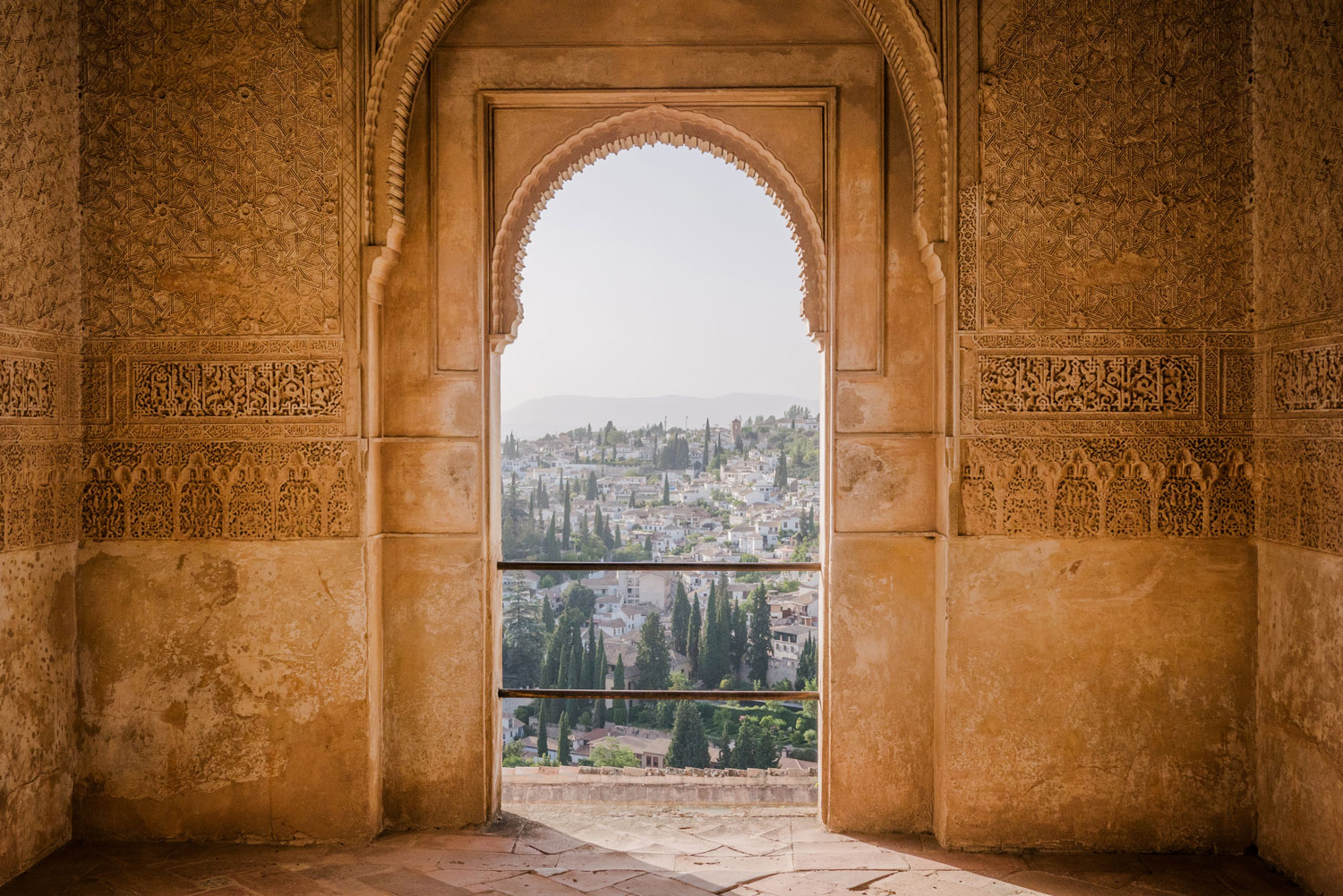Marines’ Memorial Theatre
With the coming of Islam into the Iberian Peninsula in the 8th century, rediscovered classical intellectual and artistic traditions flourished for hundreds of years. Cordoba was the site of the zenith of the Umayyad caliphate in Spain, with its stunning grand mosque. Advances in science, philosophy, history, visual arts, language, along with al-Hakam’s library that was reputed to contain more than 400,000 volumes, made Cordoba a true center of learning during this period. Seville, Granada, Toledo, and Saragossa also were centers of learning. Muslims, Christians, and Jews were part of an ethnically and religiously diverse society that lived in moderate though conflicted harmony. Eventually, much of this knowledge spread throughout Europe, profoundly influencing post-medieval thinking and serving as some of the foundation of the Renaissance.
FRIDAY, APRIL 23, 2021 | 7:30 – 9:30 pm
Introduction: Fred Astren (Professor, Jewish Studies, SFSU), Moderator
Islamic Spain / Teofilo Ruiz (Professor Emeritus, History, UCLA)
Focusing on the period of the Caliphate (9th to 11th century) and that of the Almohads (12th and 13th centuries), this presentation, while emphasizing those high points of Islamic civilization in Spain during these two specific periods, will also provide a brief introduction to the Islamic settlements in the Iberian Peninsula. Describing and explaining the contributions of Islam to Spanish and Western European civilizations in the Middle Ages and into the present, the lecture will conclude with a brief overview of the history of the Muslims in Spain after the great Christian conquests in 1248-52, the fall of Granada in 1492, and their eventual tragic denouement in the early seventeenth century.
Performance / Convivencia
Humanities West star performers Susan Rode Morris, Peter Maund, Tim Rayborn and Shira Kammen present a program of the diverse, fascinating, and beautiful music of Islamic Spain, exploring Sephardic songs, the Cantigas de Santa Maria, and medieval Arabic Muwashah, celebrating differences and similarities in these musical cultures, on early, Andalusian and other traditional instruments, and voices.
SATURDAY, APRIL 24, 2021 | 10 am – 12:00 noon & 1:30 – 4 pm
Introduction / Fred Astren (Professor, Jewish Studies, SFSU), Moderator
Muslims, Christians, and Jews in the So-Called Golden Age of Muslim Spain / Fred Astren (Professor, Jewish Studies, SFSU)
Muslim Spain is often portrayed as a multicultural paradise distinguished by tolerance, social harmony, and religious liberty. In fact, its tangled history is marked by acculturation and resistance to Islam, the layering of ethnic and religious identities, and is punctuated by violent Muslim and Christian interventions from beyond the borders. The resulting religious and ethnic complexity demands that notions of medieval Iberian convivencia (literally, “living together”) take into account conflict and discord as much as coexistence. Even as individuals could operate outside of the limits of their particular group identities in economic, cultural, artistic, and intellectual life, they were keenly aware of their place in society and jealously guarded their turf.
Framing Vernacular: Arabic Literature and the Making of The Spanish Language / Camilo Gómez-Rivas (Associate Professor, Mediterranean Studies, UC Santa Cruz)
When the king of Castile-Leon set out to outdo his father and elevate the local dialect to the level of high language, he mined the Arabic literary tradition for inspiration and content. On the most significant land border between Western Europe and Islam, this founding father of Spanish took liberally from a language and tradition that was not only a neighbor and adversary but was also the greatest exponent of a medieval global culture to which the king’s own culture aspired. And by translating a famous collection of animal fables, Alfonso el Sabio was not just translating an Arabic story into Castilian but also forging a connection to distant pasts (Persian and Sanskrit, among others) and traditions of government, ethics, and wisdom, providing a frame for the cultural aspirations of what was to become one of the first great European vernacular empires (and a blueprint for the rest).
Following the Clues: Detecting Islamic Architecture in Unexpected Places / Deborah Loft (Emeritus Professor, Art History, College of Marin)
The striking features of Islamic architecture in medieval Iberia drew from several cultures (Near Eastern, north African, Roman, Visigothic), and in turn, were integrated into Christian churches and Jewish synagogues. These influences spread through pilgrimages, and through monastery contacts; reaching into France, and even further north. Following this trail includes the detective work of finding structures and details which reveal the integration of Islamic forms in unexpected places. The Great Mosque of Córdoba, the palatine city of Madinat al-Zahra, and other medieval buildings in Spain will be points of reference for tracing these points of inter-cultural contact.
Islamophilia and Islamophobia: Visions of Islamic Spain / Hussein Fancy (Associate Professor, History, University of Michigan)
The influence of Islamic Spain is patent in Spanish art, architecture, cuisine, and even language, but the meaning of that influence has been a fraught one. Ranging from medieval to modern perspectives, this lecture addresses the long and entangled history of Islamophilia and Islamophobia, the love of Islam and the hatred of it. Rather than competing perspectives on Islam, Professor Fancy argues, Islamophilia and Islamophobia were competing perspectives on Spain itself. The legacy of Islamic Spain reveals both the allure and danger of reading the present through the past.
Discussion with the presenters, George Hammond (Humanities West), Moderator
